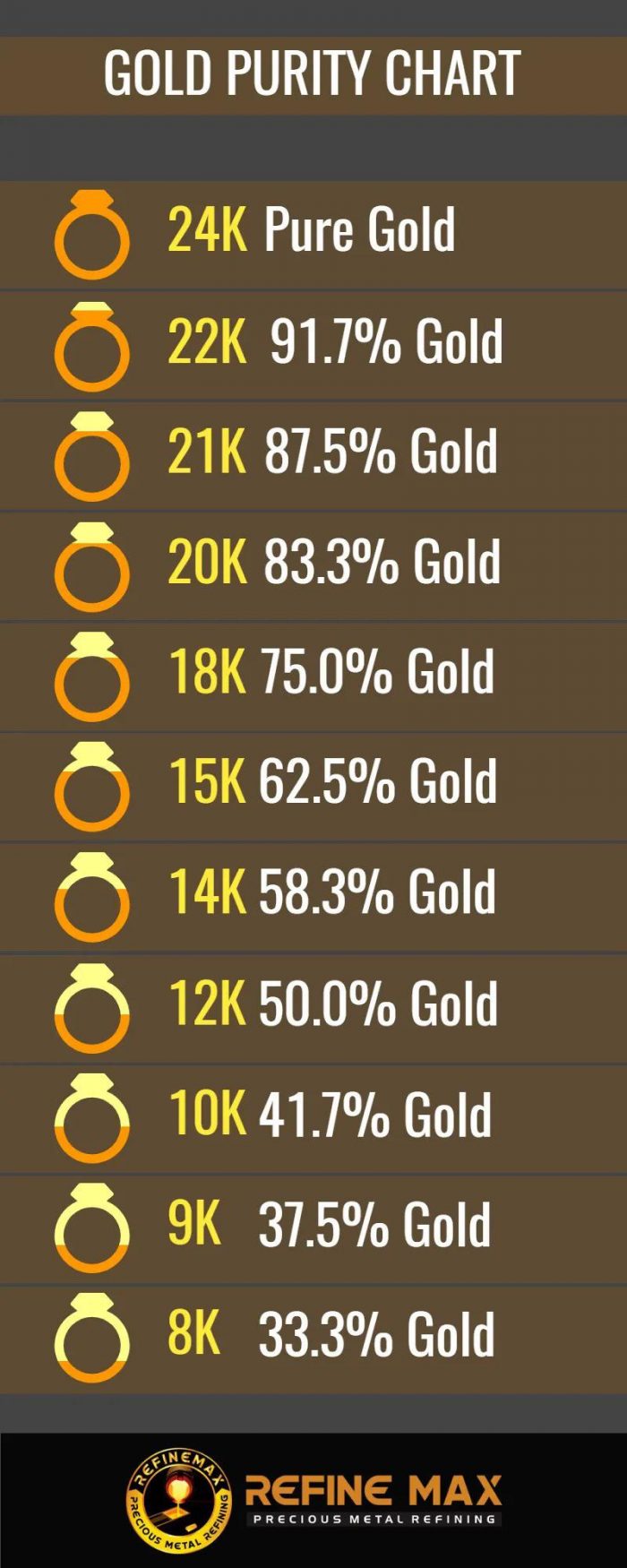
There are many different types of gold purity charts out there, but they all serve the same purpose: to help you understand what types of gold are available and how pure they are. The chart below shows the most common types of purity levels that can be found in today’s market. Each type has a number listed next to it that indicates how much pure gold is in that specific item (e.g., 18 karat jewelry contains 18 parts pure gold for every 24 parts total). As you can see from this chart, there is no one-size-fits-all solution when it comes to picking your perfect piece of jewelry! You’ll need to think about what exactly you’re looking for before making any purchases so that you can find something with just the right amount of purity for your needs.
The gold purity charts are a useful tool that helps you understand and compare the different types of gold that are out there. They show the percentage of pure gold in each piece, so you can easily see which pieces have more or less value than others. The first step is deciding what kind of investment you want to make: bullion bars or coins? If you’re looking for something small, consider buying coins; if not, then consider investing in larger bullion bars like those made by Perth Mint (see image below).
Pure gold is 24 karat, which is 99.99% gold. It’s the most expensive type of gold and used for jewelry and other decorative items. You can also find it in coins, medals and other types of currency. Pure silver is 999 fine (99.9%) silver. Fine silver is softer than sterling (.925) so it can be worked with simple tools instead of being mass produced by machines like sterling does at a lower cost per ounce but higher quality item when compared to 925 sterling silver products produced from recycled scrap metal sources such as old jewelry pieces or coins etc.. 22 karat gold is 91.7% gold, and 21 karat gold is 87.5% gold. 24 karat is 100% pure gold and therefore cannot be further refined into a higher purity level by adding other metals or alloys. There are different types of purity levels for different types of jewelry. Pure gold alloys with other metals to make it more durable or malleable (easier to work with). In general, the higher the percentage of pure metal in your jewelry item, the better quality it will be–but there are exceptions! For example: If you want an inexpensive ring that’s likely to bend easily under stress but still look nice enough on your finger, go for 22 carat instead of 18 carat; if money isn’t much issue but durability matters most then opt for 14 carat instead (or even 12 carat).
Different types of jewelry require different types of purity levels, so it’s important to make sure you know what you’re buying for your specific needs. The purity level will be listed on the packaging, but if you don’t see it there, ask about it. The purity level is important because it affects the value of the jewelry and how long it will last. Knowing about the different types of gold purity can help you pick the right one for your needs. In general, 24 karat is pure gold, while 22 karat is 91.7% and 21 karat is 87.5% gold. However, these numbers are not exact because there’s some extra weight from other metals in each piece of jewelry–the amount depends on what alloy has been used in its creation.
The purity of gold is an important factor to consider when buying jewelry or other items made from the precious metal. The gold purity chart will help you understand what types of gold are available and what they mean for your purchase.
